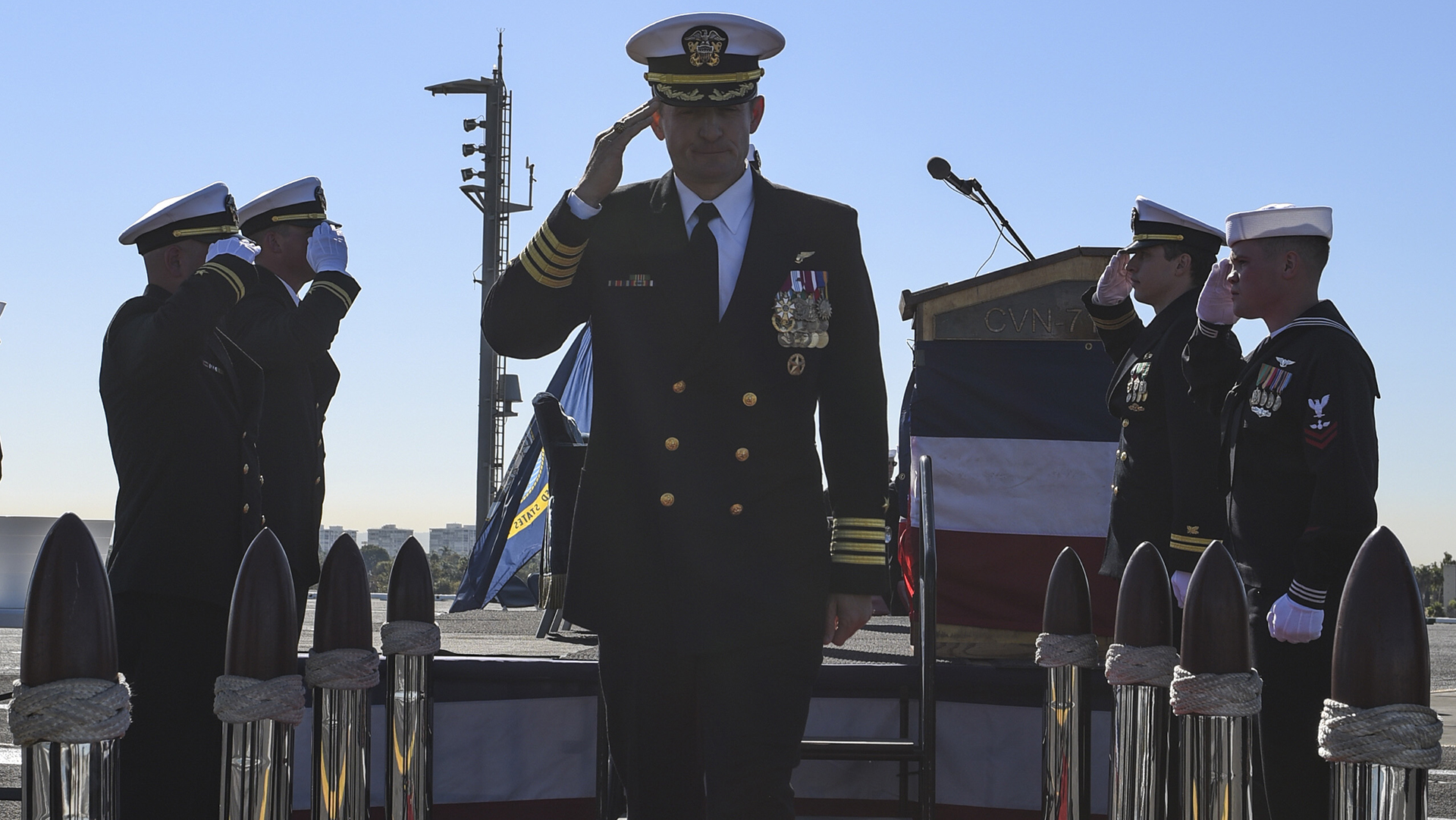

The public will now finally judge for themselves what happened on the aircraft carrier USS Theodore Roosevelt before and after Capt. Brett Crozier warned Navy commanders that his sailors were at risk of dying from the novel coronavirus (COVID-19) unless most of the crew was placed into individual quarantine.
Task & Purpose is publishing more than 1,200 pages of communications to and from Crozier’s email address in March and April 2020, which show how quickly COVID-19 swept through his ship and how the Navy brass failed to grasp just how dire the situation truly was.
Crozier was fired as the aircraft carrier’s commanding officer on April 2. Chief of Naval Operations Adm. Mike Gilday later decided not to reinstate Crozier as the ship’s captain for allegedly not moving crew members ashore quickly enough.
But the emails, which Task & Purpose obtained through a Freedom of Information Act lawsuit, reveal that the ship’s sailors needed to test negative for COVID-19 before they could be moved to hotels on Guam and that the Theodore Roosevelt did not have nearly enough testing swabs for the job at hand.
On April 1, the Theodore Roosevelt’s supply officer sent an email with the subject line “Plea for help” to Rear Admiral Kenneth Epps at Fleet Forces Command saying the ship urgently needed 10,000 medical swaps with transport kits.
“We have 1,000 left onboard which only gets us through tomorrow,” the supply officer wrote. “*All testing is being done in Korea, hence the need for the transport kits.”
Even when the ship’s sailors got ashore, their living quarters were initially inadequate.
As late as March 30 – the day Crozier sent his now-infamous email along with a four-page letter to Navy commanders – sailors from the Theodore Roosevelt were not lodged in single rooms ashore, according to an email from the ship’s reactor officer to Crozier.
“Turns out they are 2 to a room, 6 to a unit,” the reactor officer wrote. “All sharing a head.”
“Also, the rooms have roaches (mostly dead) and some don’t have a/c [air conditioning],” the reactor officer continued. “I’m not sure how this is better for our Sailors.”
Related: Why it took us nearly a year to tell the full story of what happened to Navy Capt. Brett Crozier
In total, the emails demolish the Navy’s official rationales for firing and then not reinstating Crozier. For the sake of transparency, Task & Purpose is making these communications available so the American public has a full understanding of the how the crisis aboard the Theodore Roosevelt unfolded.
“These email records are unclassified and were made in the course of regular government activity,” Task & Purpose Editor in Chief Paul Szoldra said. “So they are America’s records, and Americans have a legal right to them under the Freedom of Information Act.”
Read the Crozier emails below:
Featured image: Sailors salute Capt. Brett Crozier, commanding officer of the aircraft carrier USS Theodore Roosevelt on Nov. 1, 2019. (U.S. Navy photo by Mass Communication Specialist 3rd Class Sean Lynch.)
